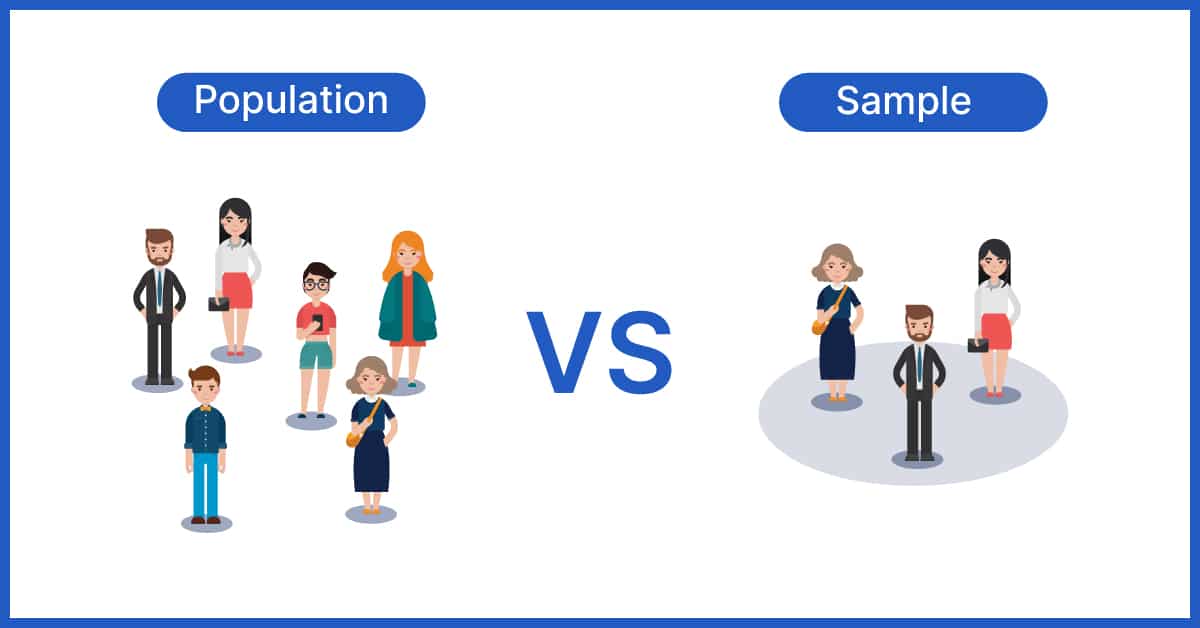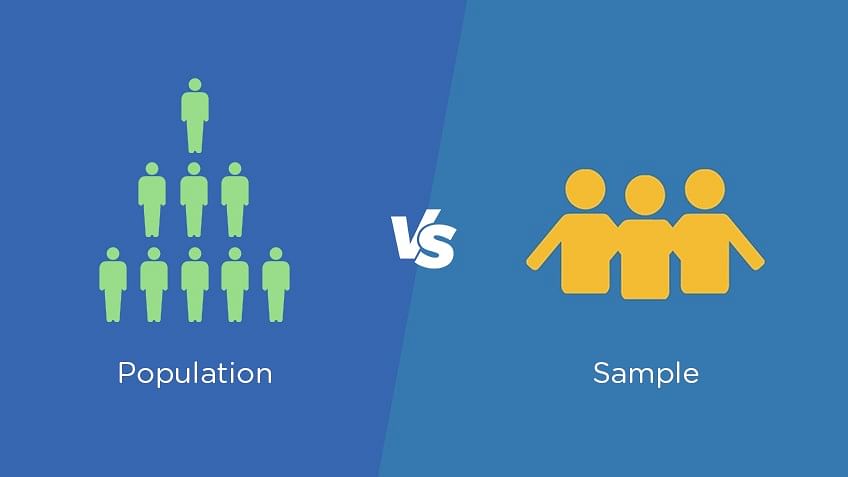Find step-by-step Statistics solutions and your answer to the following textbook question. A sample is a subset of people items or events from a larger population that you collect and analyze to make inferences.
A survey done of an entire population is accurate and more precise with no margin of error except human inaccuracy in responses.

. All the people who have the ID proofs is the population and a group of people who only have voter id with them is the sample. A sample is a subset of people items or events from a larger population that you collect and analyze to make inferences. A sample represents the group of interest from the population which you will use to represent the data.
The main difference between population and sample is that the population includes all the units from a set of data. On the other hand population mean is labelled as μ Greek term mu. To represent the population well a sample should be randomly collected and adequately large.
The collection of all elements possessing common characteristics that comprise universe is known as the population. Sample and population are part of inferential statistics. Science there are often differences between the values of a sample and the values of a population.
Population data is a whole and complete set. The main difference between population and sample is that a population. The sample is an unbiased subset of the population that best represents the whole data.
The sample is a subset of the population that is derived using sampling. In inferential statistics a conclusion is made about a population of interest. The sample is represented by x pronounced as an x bar.
This is called sampling error and it is the research-ers duty to minimize this type of error. Weve got the study and writing resources you need for. All the students in the class are population whereas the top 10 students in the class are the sample.
The sample includes a small group of units selected from the population For example a population may be all people living in Australia and the sample may be a specific group of people living in Australia. In other words sample should represent the population with fewer but sufficient number of items. This means that it is calculated from only some of the individuals in a population.
In the above example only com - munity college students in three schools in New Hampshire would consti-tute an appropriate sample as. The measurable characteristic of the sample is called a statistic. The population consists of each and every.
Thus the standard deviation of the sample is greater than that of the population. The reason for this is because when we calculate the sample standard deviation. Since the sample standard deviation depends upon the sample it has greater variability.
Explain the difference between a population and a sample. 0213 Describe the difference between the calculation of population standard devia. From the formulas above we can see that there is one tiny difference between the population and the sample standard deviation.
To represent the population well a sample should be randomly collected and adequately large. Explain the difference between the two. In simple terms population is the largest collection of items that we are interested to study and the sample is a subset of a population.
Your sample is the group of individuals who participate in your study and your population is the broader group of people to whom your results will apply. This subset of the population is called a sample. Explain the difference between descriptive statistics and inferential statistics.
First week only 499. The difference between population and sample can be drawn clearly on the following grounds. Population and Sample Examples.
Your sample is small portion of a vaster ocean that you are attempting to understand. If the sample is random and large enough you can use the information collected. 10 rows Main Difference.
A sample is a subset of the population. The arithmetic mean of random sample values drawn from the population is called sample mean. As an analogy you can think of your sample as an aquarium and your population as the ocean.
When calculating the sample standard deviation we divided by n-1 instead of N. Explain the difference between a population and a sample from a statistical point of view. A sample standard deviation is a statistic.
This subset of the population is called a sample. Since a sample is a subset of a population a sample is always smaller than the population. A subgroup of the members of population chosen for participation in the study is called sample.
One population can have several samples with different sizes. The arithmetic mean of the entire population is called population mean. 1 Note that a population must not necessarily be large.
Start your trial now. 4pts Chapter 2 1. It might be the case that you study such a narrow population eg first-year male bachelor students from your university who passed the statistics exam in June and for whom their parents have been divorced for more.
Explain the difference between quantitative variable and qualitative variable. To overcome the restraints of a population you can sometimes collect data from a subset of your population and then consider it as the general norm. When you collect data from a population or a sample there are various measurements and numbers you can calculate from the data.
A parameter is a measure that describes the whole p. The goal of inferential statistics is to draw conclusions about a population based on a sample. What is the difference between a random sample and a simple random sample.
Solution for Explain the differences between a sample and a population.
![]()
What Is Sample Size Definition Omniconvert

Population Vs Sample Definitions Differences Examples



0 Comments